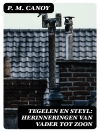In ‘A History of New York: From the Beginning of the World to the End of the Dutch Dynasty, ‘ Washington Irving employs a satirical and humorous narrative style to chronicle the early history of New York City, particularly during the Dutch colonial period. Through the guise of a fictitious historian, Diedrich Knickerbocker, Irving blends fact and fiction, crafting a whimsical yet insightful commentary on society, politics, and culture. His work stands as a pivotal piece in American literature, epitomizing the early 19th-century romanticism that sought to define an American identity separate from European influences. Washington Irving, a pioneering American author and biographer, is often hailed as one of the first American writers to achieve international acclaim. His diverse experiences, including his travels in Europe and his observations on American life, influenced his perspective on the complexities of American history and identity. ‘A History of New York’ showcases his ability to merge storytelling with historical narrative, reflecting concerns about urbanization and national character that were relevant during his era. Irving’s witty exploration of New York’s past is not merely an entertainment but also a thoughtful engagement with the emerging American consciousness. This book is recommended for anyone interested in the cultural roots of New York City or the development of the American literary tradition, offering both amusement and enlightenment in equal measure.
Tentang Penulis
Washington Irving (1783–1859), an iconic figure in American literature, is celebrated for his remarkable contribution to early nineteenth-century writing. Born in New York City shortly after the American Revolution, Irving cultivated a literary style marked by wit, eloquent prose, and a keen engagement with the themes of tradition and history. His book ‘A History of New York: From the Beginning of the World to the End of the Dutch Dynasty, ‘ originally published under the pseudonym Diedrich Knickerbocker in 1809, exemplifies Irving’s satirical finesse, offering a playful and imaginative retelling of New York’s history that simultaneously managed to critique contemporary society and politics. The book is noted for its clever use of a fictional narrator, a device that allowed Irving to challenge readers’ perceptions of authenticity and historical narrative. Throughout his career, Irving also produced a significant corpus of work, including the beloved tales ‘The Legend of Sleepy Hollow’ and ‘Rip Van Winkle, ‘ found in ‘The Sketch Book of Geoffrey Crayon, Gent.’ These stories, with their blend of American and European literary traditions, helped define a uniquely American voice in literature. His works often explored the boundaries of reality and fantasy, a narrative style that would make a substantial impact on the development of American fiction. Irving’s legacy resides not only in the literary merit of his works but also in his role in shaping an American identity within the literary canon.












